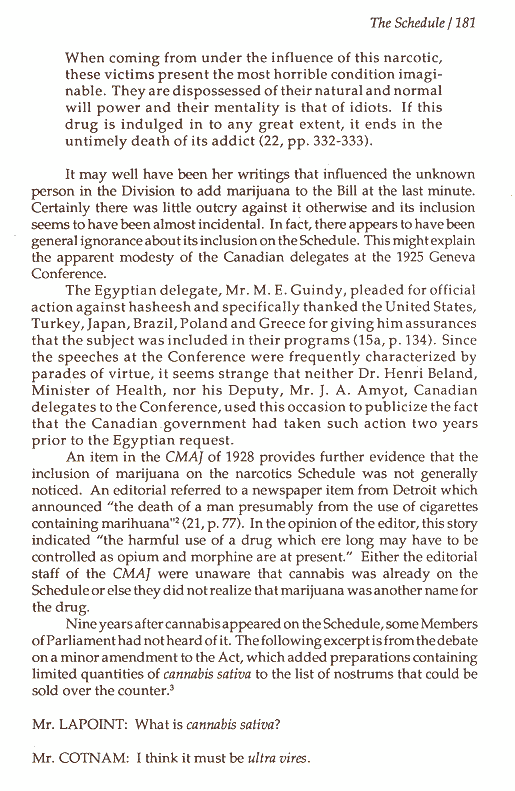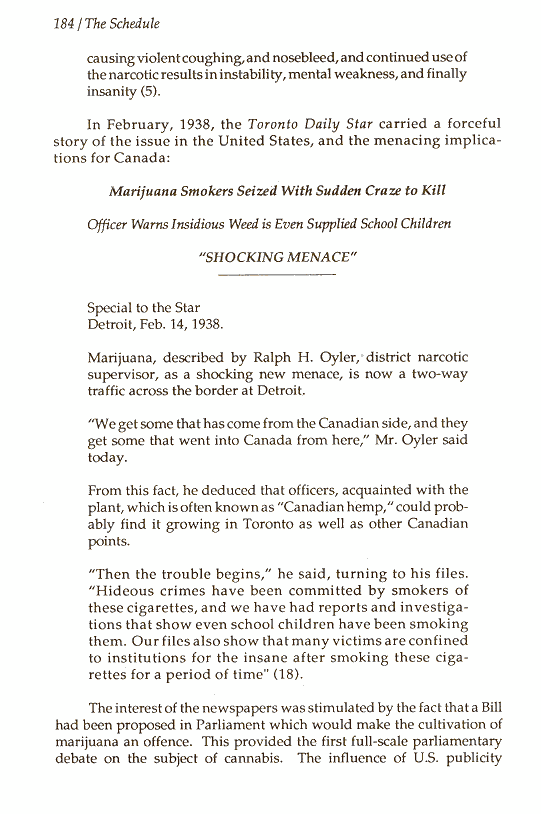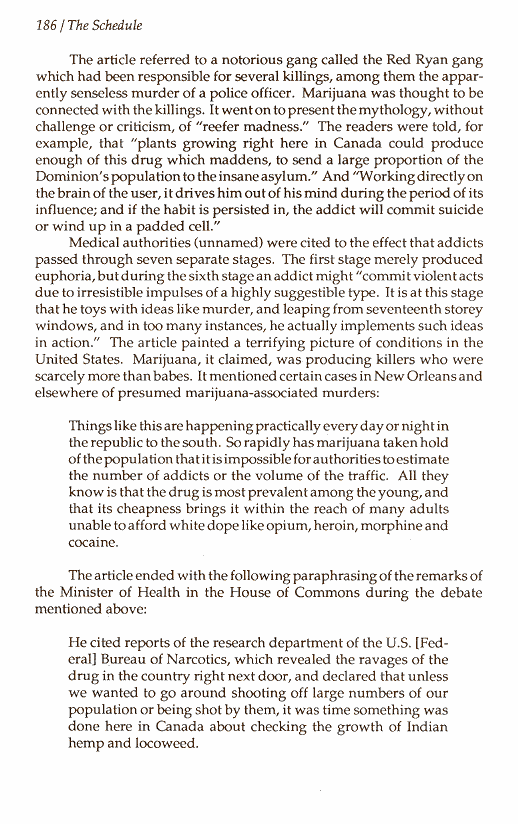
Home | Goals
| Founders | What's
New |
Headlines |
Contact
Us | Please donate! |Links
| Search
The Origins of Canada's Cannabis Laws
-- excerpts from Giffen, Endicott and Lambert, Panic
and Indifference: The Politics of Canada's Drug Laws (Canadian Centre
on Substance Abuse, 1991), pp. 179-91, 599-600: ISBN 0-9695468-0-7

Of particular interest:
-
the addition of cannabis to the Schedule (of prohibited drugs) of the Opium
and Narcotic Drug Act in 1923 before cannabis was identified
as a social issue in Canada -- a "solution without a problem" (p. 179).
The first seizure of marijuana cigarettes occurred only in 1932, nine
years after the law had passed (p. 182); the first four possession offences
(it is not clear whether these were charges or convictions) occurred only
in 1937,
14 years after cannabis was criminalized (p. 599)
-
the mystery about why cannabis was added to the Schedule of prohibited
drugs in the first place, including the complete absence of debate in Parliament,
and the lack of evidence of any consideration of the scientific knowledge
about cannabis (pp. 179-80)
-
the equally mysterious addition of "cannabis indica" to one of the carbon
copies of a draft of the Schedule before it was enacted, with no explanation
(p. 179)
-
the hysterical, unscientific and racist rantings of Emily Murphy, Canada's
first female magistrate (and one of the "Famous Five" who successfully
argued that women were "persons" under Canadian law) that may have
been the impetus for criminalizing cannabis (pp. 179-81)
-
the apparent ignorance within government (even nine years after the law
had passed) and the Canadian Medical Association that Canada had criminalized
cannabis (pp. 181-82)
-
very few possession offences -- in some years, none at all -- between 1923
and 1966; 1966 was the first year when cannabis possession offences (or
charges) exceeded 100 per year (pp. 599-600)
-
throughout these pages, reports of the wealth of propaganda by government,
the police and the media about cannabis. Some things never change.
-- Eugene Oscapella, Canadian Foundation for Drug Policy, January
2003







-







Updated:12 Jan 2003|
Accessed:150074times















